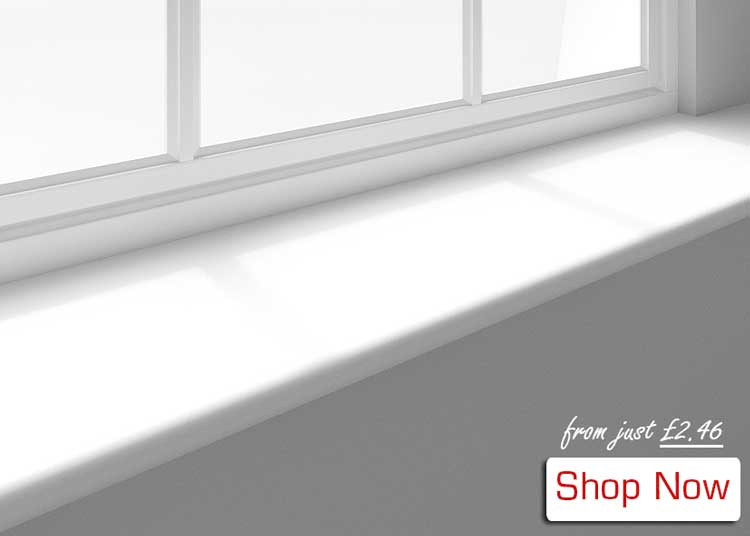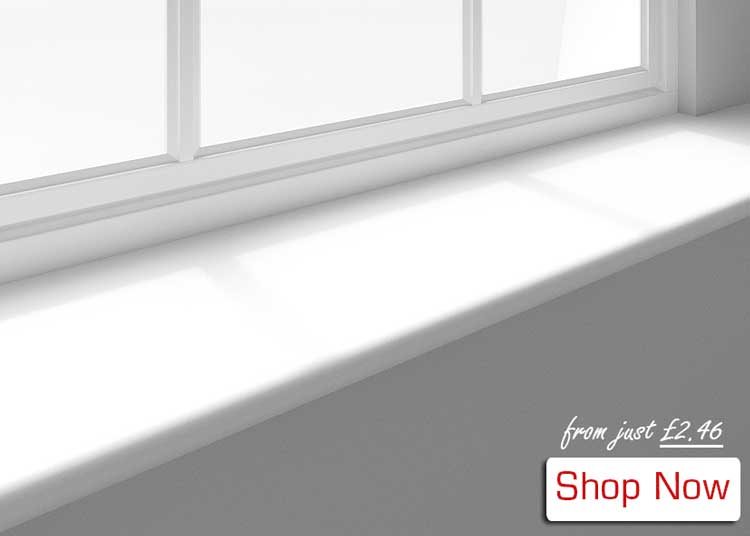
What Is A Window Sill? | Window Board Purpose | Uses | Benefits
Posted by Lee Watkinson on 10th Jul 2024
What Is A Window Sill/Board?
A window board is a piece of wood (or in our case premium MDF) that is found underneath a window. They are commonly referred to as window sills.
What are they used for?
A window sills primary use is to cover the reveal at the bottom of the window.
External walls are usually a lot thicker than a window and because they are fitted flush with the outside of the wall, you are left with a reveal around the window.
A window sill fitted on the bottom reveal covers this gap.
Do they serve any other uses?
As well as their main purpose, they do have other uses:
Aesthetically Pleasing
When fitted underneath the window, the reveal itself looks more appealing to the eye.
Generally, the left, right and top of the window reveal are plaster boarded and then plastered. The bottom of the reveal is normally left as brickwork or bare plasterboard.
This is why a window sill can help make the window reveal look complete.
Can Be Used As A Shelf
In most homes, you'll find various ornaments and picture frames on the window sills.
This is common practice as they are normally wide enough to sit an array of items upon.
What's The Best Material For A Window Sill?
You can find window sills made using softwood, hardwood, PVC and MDF. Out of these, we would always recommend MDF as it tends to be the cheapest option and gives the best finish (especially if painting).
Softwood and hardwood window sill scan be expensive. PVC doesn't have the same premium look as wood.
Our MDF window sills are made using our premium moisture resistant MDF. If you choose the undercoated option, you'll be able to apply your final finish straight away. We also offer a primed finish which requires a little more work before you can paint the boards.
Do All Window Sills Feature A Bullnose?
When purchasing window sills, you may find that a lot of them are described as being bullnosed. This refers to the front edge of the board being round rather than square.
This helps to make the board look more appealing and also prevents any sharp edges from causing harm.
But to answer the question, no. Not all window sills feature a bullnose.
You can get hold of square window sills upon request. Companies like ourselves can also add a different shape or design should it be required.
Do Window Sills Always Have A Tongue?
Not as standard. For instance, our window sills will not feature a tongue unless it is requested.
A tongue is used to fit into the groove on the window to help secure the board and keep it in place.
However, it's not a necessity. Window sills can be installed perfectly without a tongue.
Can You Use Window Sills To Make Shelving?
Yes, we've had many customers order them for this purpose. They've also used them to make bookcases.
Our standard sizes may be too big for these uses, but that's why we offer custom and bespoke window sills.
We can pretty much make any size that is needed. If you have a project coming up, just get in touch for a quote.
What Is An Internal Window Sill?
An internal window sill (also known as an internal window board) is a piece of wood used to finish off an internal window frame.
All of our window sills are strictly for internal use.
What Is The Inside Ledge Of A Window Sill Called?
This question answers itself - it's a window sill! And a window sill can be described as the internal and external ledge that runs along the bottom of a window (note that ours can only be used internally).
What Is The Difference Between A Window Sill And A Window Seal?
A window sill is a window board - used to finish off a window frame.
A window seal is generally used to prevent weather (such as wind and rain) from entering around the window.
As you can see, although they sound similar they are completely different!
How Far Should A Window Sill Overhang?
In our experience, the overhang is usually around 1 inch (approx. 25mm). This is also described as how far the window board sticks out past the edge of the wall (plaster finish).
However, don't let this stop you have more or less of an overhang - as long as it is practical, it's down to personal preference.
Some people base this measurement on the thickness of the window board. For instance, if it's 18mm, they'll make the window sill stick out 18mm.
Generally speaking, modern houses have much shorter overhangs than what you find in older houses.
-

Lee Watkinson
Digital Marketing Director at Skirting World with 10 years of experience in Home Interiors & Manufacturing.








